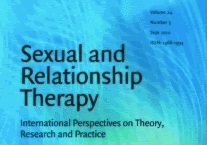
This article about Arvick Baghramian’s book ‘The Magic of Shamanism’, was published in the magazine ‘Sexual and Relationship Therapy’. The article was written by Rachel Phillips, Psychosexual Counsellor, Relate, Nottingham, UK.
‘This book achieves something very impressive. It is a deep portrayal of Shamanism in its many forms and yet it is written in a completely accessible way for all readers whether they have prior knowledge of Shamanism or not. It gives a thorough overview of Shamanic practices across the world and the similarities in beliefs and methods despite huge geographical distances between the Shamans themselves. Baghramian suggests that these similarities come about not through migratory transfer of knowledge but through the common development of human consciousness and because the methods are proved effective through trial and error. In this way, the work of the Shaman transcends cultural belief systems and assumptions about reality, rendering them irrelevant. The magic of shamanism describes the process of being a Shaman and how they journey into altered states of consciousness in order to access healing power. The distinction is made between traditional forms of practising Shamanism and the modern practice of Shamanic counselling which has been adopted in the West. The author makes links to Jungian and transpersonal psychological theories in explaining how Shamanic healing fits into western society. A general theme across the book is that all things in this life have a consciousness and a contribution to make and the work of the Shaman emphasizes this beautiful circularity. The Shaman is asked for help, seeks guidance from the spirits and other world advisors, receives this, sometimes directly and sometimes in the form of metaphors, and carries this advice back to the person in need who can in turn then give more to their life and experience through taking that advice. Baghramian, using case studies, explains how Shamanic counselling varies from this in empowering the client to journey him or herself for guidance with help from the Shamanic counsellor, thus taking a more active role in their growth and development. There are moving descriptions of the power of these journeys and of the transformative nature of using a crisis to aid personal development. The aims of Shamanic healing differ from the reductionist methods of western medicine where there are specialists for each system and part of the body. Medical treatment emphasises ridding the patient of an ailment in an attempt to restore them to a previous state of health whereas healing aims to alleviate the suffering holistically and allow for new improved levels of growth and functioning for that person. Arvick Baghramian was originally trained as a social worker and then a therapist before she discovered Shamanism. Within this book she has given a fascinating insight into the therapeutic uses of Shamanic practice and has certainly left me with the desire to know more about this area of healing work.’
[maxbutton id=”8″]

